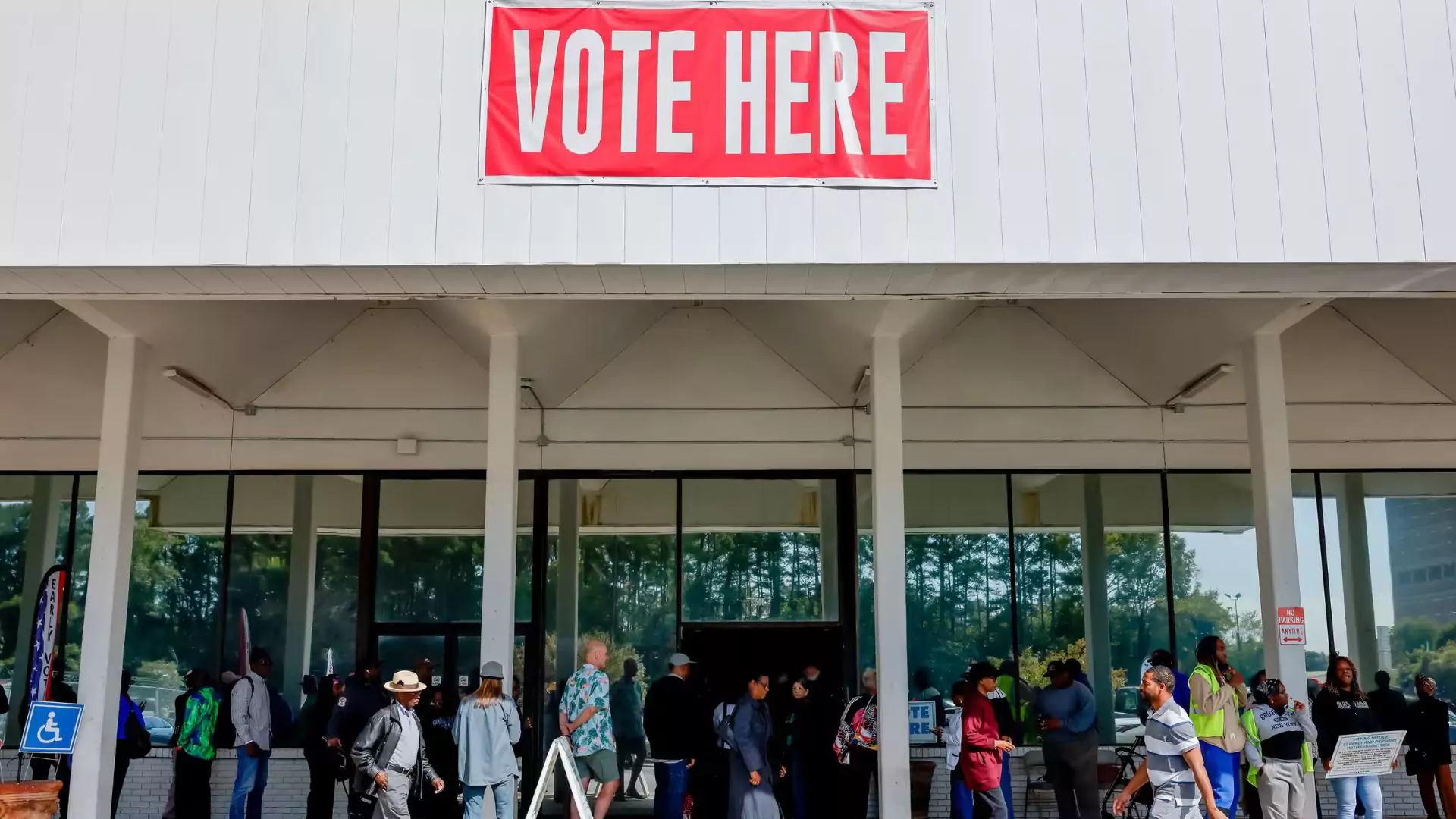Seven states will play a critical role in determining the outcome of one of the most significant elections in recent history on November 5. These states—Arizona, Georgia, Michigan, Nevada, North Carolina, Pennsylvania, and Wisconsin—are etched in the memories of politically engaged Americans. In the US election, the president is not elected by popular vote but through electoral college votes accumulated state by state.
Election campaign
Collectively, these seven battlegrounds hold 93 electoral college votes, with Pennsylvania having the highest at 19. This is why its residents are inundated with campaign efforts. As the election draws closer, Donald Trump and Kamala Harris, along with their running mates, JD Vance and Tim Walz, will be tirelessly campaigning in these states to reach the crucial threshold of 270 electoral votes needed for victory.
These states are termed battlegrounds in US election because neither party can count on them as a guaranteed win. However, this year’s unpredictability has reached unprecedented levels. According to The Guardian’s presidential poll tracker, five of these states are essentially tied within a three-point margin of error, while only Arizona, where Trump holds a slight lead of four points, and Wisconsin, where Harris is ahead by five, show clearer standings.
Arizona and US election
In Arizona, polling indicates that Trump has a slight advantage over Harris in the US election presidential race. The Senate contest is crucial for the party’s hopes of maintaining control and currently appears to favor Gallego. Additionally, Arizona is home to two highly competitive House races, which are critical for securing the speaker’s position. Voters in the state are also considering an initiative to protect abortion rights in the state constitution.
Georgia and US election
Georgia’s electorate is now shaped by a diverse mix of Asian and Latino voters, transforming the political landscape in suburban Atlanta, which played a significant role in Biden’s victory in 2020 US election. The rift between traditional conservative Republicans and the MAGA movement may also be influential. Suburban moderates turned away from Trump in 2020, and he has made little effort to regain their support.
Despite historically higher early voting rates among Democrats, Trump has urged his supporters to vote early in person, and many seem to be following his advice.
Michigan
In Michigan, Trump narrowly won in 2016 by just over 10,700 votes but lost to Biden in 2020 US election. Key demographic targets include Black voters in Detroit, whose low turnout in 2016 contributed to Clinton’s loss. Harris is also focusing on white suburban women, many of whom have shifted away from Trump due to his stance on abortion rights, false election fraud claims, and legal troubles.
However, the election’s outcome in Michigan may hinge on factors beyond state lines. Over 100,000 Michigan Democrats, particularly from the Arab American community in Detroit, chose not to support Biden in the Democratic primaries due to his stance on Israel’s conflict in Gaza. If Harris fails to secure even a fraction of these voters, it could be decisive.
Nevada and US election
Nevada has leaned Democratic in every presidential election since 2008, though winning candidates have only done so by narrow margins. Approximately 40% of voters in the state do not align with either major party. While Latino voters, who now make up 20% of the electorate, have historically supported Democrats, the party’s popularity appears to be declining.
Polling in Nevada is notoriously difficult due to the transient populations in major cities like Reno and Las Vegas, where many residents work unpredictable hours in the entertainment and hospitality sectors. Some voters still recall the lower costs during the early days of the Trump administration.
North Carolina
For Trump to have a clear path back to the presidency in 2024 US election, he needs to win North Carolina, a state that has supported a Democratic president only twice in recent decades—Carter in 1976 and Obama in 2008. Trump secured a narrow victory here in 2020 by just 75,000 votes.
Since taking over the Democratic campaign from Biden, Harris has narrowed the race significantly. Trump’s campaign is focused on mobilizing his base of predominantly white rural voters, undeterred by hurricane concerns. The record-breaking early voting turnout has bolstered his campaign, with Republicans matching Democrats in turnout for the first time in recent years.
Harris, meanwhile, is implementing an extensive ground game, with hundreds of staffers mobilizing across the state to maximize voter turnout. The strategy is that if Trump can be stopped in North Carolina, his path to regaining power will be hindered.
Pennsylvania
Pennsylvania has been a focal point in the contentious US election cycle. One memorable moment occurred when Trump raised his fist to supporters after a gunman attempted to assassinate him during a rally in July. In the wake of that incident, Biden withdrew from the race, allowing Harris to ascend to the Democratic nomination.
Both candidates have made numerous visits to Pennsylvania, underscoring its critical importance in the presidential election. Trump has emphasized the state’s significance, stating that winning Pennsylvania equates to winning the entire election.
As the fifth-most populous state, Pennsylvania has the highest number of electoral votes among the battlegrounds. While much of its population resides around Philadelphia and other smaller cities like Pittsburgh and Scranton—where Biden performed well in 2020—the more rural areas may have a substantial influence on the outcome. In recent elections, white, blue-collar voters in these rural regions have increasingly turned away from Democrats.
Wisconsin and US election
Known for its dairy production, manufacturing, and healthcare industries, Wisconsin is often associated with the “blue wall”—a collection of states that traditionally voted Democratic in the 1990s and early 2000s. Trade unions historically contributed to high voter turnout for Democrats; however, a series of anti-labor laws enacted by a Republican-led state government in 2011 weakened their influence.
Rural regions have shifted toward Republican candidates, leaving cities like Milwaukee, which is the most racially diverse in Wisconsin, and the liberal stronghold of Madison as key Democratic areas.
With the economy being the primary concern, turnout will be crucial. Republicans are targeting rural voters and young men, who have increasingly gravitated toward conservative politics. Meanwhile, Democrats are hopeful that the close race—evident with half a million votes already cast—will galvanize volunteers to mobilize support in 2024 US election.
Read More: Battlefield Breakdown: How Harris And Trump Stack Up In Key States!
















